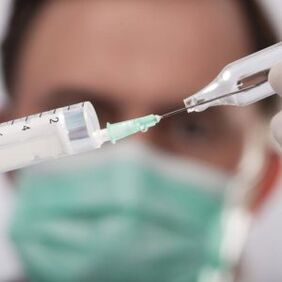
Treatment of papillomavirus is a complex technique for eliminating the symptoms of infection, its causes, by surgical and therapeutic methods. Benign tumors - papillomas - can occur on different parts of the body or mucous membranes. Most often, such formations are harmless, but there are situations where it is necessary to remove them to prevent degeneration of the formation in an oncological tumor. Therefore, it is very important to treat HPV properly while adhering to all the recommendations of traditional medicine.
Drug Therapy
It is not possible to cure papillomavirus in a short time. To solve the problem, it is important to use antiviral and immunomodulatory drugs that prevent the spread of the disease and the malignancy in the formed formations. All medicines in the form of tablets, injections or suppositories are prescribed to patients after diagnosis.
For the treatment of papillomavirus, drugs from the groups of immunostimulants, antivirals, homeopathy, tumors and cytotoxic drugs are used. The first 3 groups of drugs can have different forms (tablets, injections and others) and are used to combat the cause of the disease, and the last 2 groups are used to gradually remove the formed formations.
The purpose of the use of immunostimulants is to strengthen and activate the protective functions of the body to promote the synthesis of antibodies that fight viruses and infections. If you use immunostimulants in combination with antiviral drugs, the effect of the latter will be many times higher.
The effectiveness of the immune modulators used to treat HPV will depend on the individual reactions of the patient's body and the treatment complex of which they are an integral part. However, in most cases, with a designated papillomavirus clinic and the use of immune modulators, the disease becomes regressive and may even disappear completely.
| Active ingredient | Pharmaceutical Group |
|---|---|
| Taurine, benzocaine, interferon | Antimicrobial and antiparasitic agents. Antiviral drugs. Interferons |
| Interferon | Antimicrobial and antiparasitic agents. Antiviral drugs. Interferons |
| Echinacea purpurea juice | Drugs that correct immune processes. Drugs that stimulate immune processes |
| Affinity purified antibodies to human gamma interferon | Homeopathic medicines |
| Lyophilized bacterial lysate: Streptococcus pneumoniae, Haemophilus influenzae, Klebsiella pneumoniae, Klebsiella ozaenae, Staphylococcus aureus, Streptococcus viridans, Streptococcus pyogenes, Moraxella catarrhales. | Drugs that correct immune processes. Drugs that stimulate immune processes |
| Antibodies to human gamma interferon affinity purified, antibodies to histamine affinity purified, antibodies to CD4 affinity purified | Antiviral, antihistamine |
| Sodium deoxyribonucleate | Drugs that correct immune processes. Drugs that stimulate immune processes |
| Human gamma interferon (recombinant) | Antimicrobial and antiparasitic agents. Antiviral drugs. Interferons |
| Mixture of bacterial lysates (Streptococcus pneumoniae, type I + Streptococcus pneumoniae, type II + Streptococcus pneumoniae, type III + Streptococcus pneumoniae, type V + Streptococcus pneumoniae, type VIII + Streptococcus pneumoniax> Streptococcus pneumoniaeimmune modulators | |
| Oxyethylammonium methylphenoxyacetate | Drugs that correct immune processes. Drugs that stimulate immune processes |
| Inosin pranobex (inosiplex) | Antimicrobial and antiparasitic agents. Antiviral drugs.
Antiviral drugs from other groups |
| Polyoxidonium | Drugs that correct immune processes. Drugs that stimulate immune processes |
| Glycyrrhizinic acid activated | Antimicrobial and antiparasitic agents.
Antiviral drugs. Antiviral drugs from other groups |
Removal of papillomas by surgical methods
Can I resort to deletion
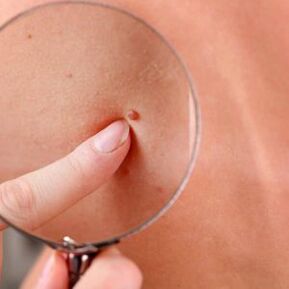
Some papillomas that appear on the body cause no discomfort to a person, while others are able to grow, creating both cosmetic defects and physical inconveniences. In case of discomfort from papilloma it is always removed, but it is worth removing the formations, if their appearance does not cause inconvenience, you must understand in each case.
Cauterization with liquid nitrogen
The most acceptable way to eliminate papillomas today is the method of burning them with liquid nitrogen or cryodestruction. The technique can be performed using hardware using a cryoprobe or manually, which is most often practiced in beauty salons.
To use the hardware cryodestruction technique, special equipment is required.
Cryodestruction is performed in the following phases:
- At the preparatory stage, the nitrogen exposure zone is anesthetized with local anesthetic solutions for patients with a low level of pain threshold or with a large area of papilloma growth. In other cases, patients are advised to take painkillers orally 1 hour before the procedure.
- At the stage of direct freezing or cryodestruction, liquid nitrogen is added to the papilloma area. At the same time, the validity period for 1 point is only a few seconds, so in 5 minutes you can freeze up to 40 papillomas on the body. Prior to cryosurgery, the patient is warned of a possible tingling sensation at the site of nitrogen application at the time of freezing.
- In the last step, disinfect the area with liquid nitrogen skin treatment with disinfectants.
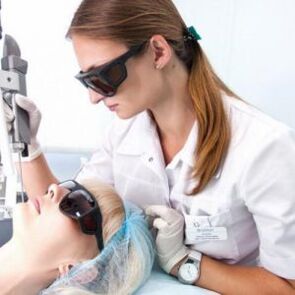
The need for cryodestruction in each case is determined by the attending physician. If the patient is at risk of papilloma degeneration to a malignant formation, removal should be performed. The factors that affect the need for cryodestruction are:
- mechanical damage to neoplasm;
- reduced level of patient immunity
- use of oral contraceptives
- bad habits of the patient;
- localization of growths in places that are regularly injured in the life process.
Cryodestruction is also indicated in case of aesthetic and physical discomfort in the patient from the presence of papilloma on the body.
The main contraindications to the use of the cryodestruction method are acute infections in the patient's body, inflammatory processes in the internal organs, atypical types of neoplasms, pathological cold intolerance. Possible complications after removal of warts with liquid nitrogen may be scarring and pigmentation of tissues at the site of application of cryoprobe.
Ointments and lotions
At pharmacies today you can buy many special lotions and ointments to remove papillomas on the most delicate areas of the skin.
It is necessary to use only ointments for cauterization training with complex therapy of the virus, which must be performed using tableted immune modulators and antiviral agents.
Multivitamins, which will improve the state of the immune system and its readiness to produce protective antibodies against the virus, will not interfere in this case.
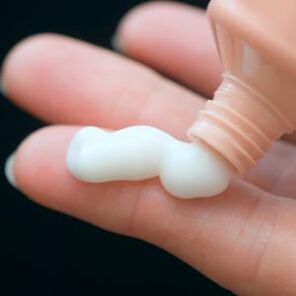
The most available ointment that can defeat papilloma is an ointment containing salicylic acid which has keralotic, bactericidal and restorative effects on the affected tissue. The agent is applied point by point to the affected area without affecting the healthy surrounding tissue that can be burned with it.
In any pharmacy you can also find ready-made solutions for removing papillomas. Using such solutions it will be necessary to prepare lotions, which will lead to the death of pathogenic microflora in the skin area and eliminate papilloma.
Surgical method
Surgical removal of growths refers to the physical removal of papillomas with a scalpel.
Removal surgery is indicated by doctors whose neoplasm size is greater than 3 centimeters in diameter.
When performing the manipulation, the surgeon first disinfects the area around the growth and the growth itself using disinfectants, then performs manipulations with local anesthetic and proceeds to the direct excision of the neoplasm. After removal of the papilloma, it must be sent for histological examination to determine the oncological nature of its cells. 2 weeks after the operation, the wound is tightened under the removed wart and healed.
The main indications for papillomary surgery are:
- large formations, their deep and flat views;
- the need for acute elimination of papilloma;
- malignant disease of papilloma;
- rejection of other methods of removing education.
The main advantages of classical excision of papillomas are complete elimination of the problem in 1 operation, low probability of recurrence in this case, safety of manipulation, absence of a large list of contraindications to the procedure and a price acceptable to themost patients.
Among the disadvantages of surgical removal of papillomas are the appearance of a scar at the site of excision and sometimes a keloid scar, a long period of post-surgical rehabilitation, refusal of exposure to ultraviolet radiation and invasiveness of the procedure. Complications of the operation in the form of redness, itching, scarring at the site of excision and an increase in body temperature can also rarely occur.
Laser Removal
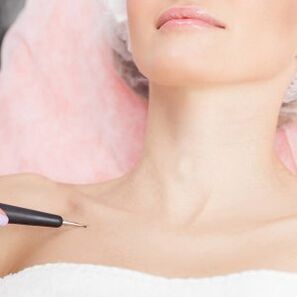
The gold standard for modern neoplasm removal medicine is represented by laser papilloma removal. Until recently, the removal of papillomas left scars, but today, the laser technique allows you to preserve the beauty of the skin without visible changes.
The basis of laser therapy for papillomas is evaporation, ie. the ability of the beam to cauterize tissue and evaporate life-giving moisture from the surface. The devices allow you to dose the duration and intensity of the exposure to the rays on the skin depending on the nature of the neoplasm.
The actual laser removal procedure takes place in several stages:
- the doctor first performs a dermatoscopy and determines the type of laser to be used;
- the site of exposure is treated with local anesthetic;
- laser removal session lasts several minutes;
- when the procedure is completed, the site of exposure is disinfected and a sterile bandage is applied if contact with clothing in this area is possible;
- the patient outside the clinic provides care for wound rehabilitation.
After laser removal of papillomas, it is forbidden for patients to sunbathe, visit pools and spas, take a bath or use cosmetics in the scar area.
These restrictions are temporary and are negotiated by the specialist and the patient before leaving the hospital.
Laser removal has a number of contraindications, both relative and absolute, determined in each case. The technique is most often not intended for diabetes mellitus, the presence of herpes, fever, influenza and acute respiratory infections, diseases of the hematopoietic organs.
Traditional methods
Herbs

Since ancient times, healers have used various herbal infusions to destroy all manifestations of papillomatosis. Many recipes have survived to this day as they are striking in their effectiveness and lack of negative effects on the body.
A popular folk remedy for HPV is wormwood tincture. With its help, you can get rid of formations on the entire body surface. The most important thing is to know exactly when and how to harvest the herb for the medicine.
Wormwood must be harvested in a certain way. The most useful in this herb are leaves and flowers, but the thick stem is not suitable for tincture. Less commonly, it is recommended for medical purposes to remove wormwood from the soil. All harvested plant parts are washed and laid out on a flat surface for drying. During the drying process, the grass must be turned at regular intervals so that it does not dry out. The finished dried herb is stored in a dry glass jar with a tight lid.
Prepared tincture against wormwood papillomas will not only get rid of this problem but also eliminate pathogenic microflora and will also have a beneficial effect on the human stomach.
The course of tincture for papillomatosis is at least 2 weeks, after which there is a break in treatment. Each of the possible tinctures is taken orally 5 drops up to 6 times a day.
Wormwood tincture can be made in oil, alcohol or cognac. For the oil tincture you need 25 grams of wormwood seeds and 0, 5 cups of olive oil. The seeds are crushed in a coffee grinder and placed in a glass container scalded with boiling water. The top seeds are poured with olive oil, everything is mixed and covered with a tight lid. The mixture is infused for three days in a cool place, filtered and ready for use.
Alcohol tincture is made from 100 grams of wormwood powder based on plant leaves crushed in a blender and 0, 5 liters of vodka. Everything is mixed and infused in glass for 10-14 days, then filtered and used as directed. The tincture should be stored in the refrigerator.
To prepare a tincture of wormwood on cognac, you need 50 grams of chopped root of plants and a glass of cognac. The ingredients are mixed and sent to a water bath for evaporation for 30 minutes. The product is then filtered and sent to a dark place for 5 days.
Also for the treatment of papillomas you can prepare an herbal infusion, for which horseradish, lemon balm, dandelion roots, plantain and stinging nettle are mixed in equal proportions (1 teaspoon each). The mixture is crushed and then 3 tablespoons of herbs are poured with a liter of boiling water and the whole thing is boiled for 10 minutes on low heat. After removing the infusion from the heat, insist for several hours.
Finished tincture is used before meals to ¼ glass for 7 days. The tool strengthens the immune system, which in turn promotes the self-absorption of papillomas.
Soda for healing
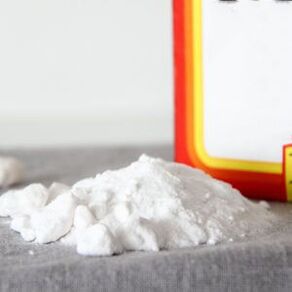
Baking soda has long been used to treat many skin problems at home, including papillomas. A feature of soda is its ability to alkalize an acidic environment, which strengthens immunity, eliminates toxins, creates adverse conditions for bacteria and pathogenic microbes. As a result, viruses in the body stop multiplying and die. The antiseptic and disinfectant effect of soda is also known, which is also useful for treating papillomas. Sodas are able to soften tissues, eliminate the symptoms of the virus and its manifestation - education. Sodas for the treatment of HPV are used internally in the form of inhalations and local lotions.
To prevent tumor magnitude and degeneration of the neoplasm of cancer, some traditional healers suggest drinking a solution of soda in milk. It is prepared from 1 cup of hot boiled milk and teaspoon of baking powder. One solution is used three times a day, in each subsequent intake the mass fraction of soda increases slightly until its concentration in milk reaches 1 tbsp. However, it is not allowed to drink milk / soda for those who have pathologies of the gastrointestinal tract.
Before using this prescription, it is best to consult a doctor.
Inhalation of baking soda is suitable as a more gentle immune-stimulating technique. To inhale, boil 1 liter of water, add 3 teaspoons of soda to boiling water, mix, bend over the pot, place a towel on your head to prevent steam from coming out and inhale soda until the water cools down. Inhalations are performed several times a day for 5 days.
Laundry Soap
Washing soap acts on the skin in a drying way - it draws moisture out of them, leading to drying and gradual death of cells. This property is very useful when removing papillomas at home. It is the moisture inside the cells of the neoplasm that contributes to its vital activity, and if it stops flowing, the wart dries out and disappears.
The most common method of treating papillomas with laundry soap is night application in the area around the neoplasm. After bathing, moisten the area with papilloma and rub plenty of washing soap without damaging the accumulation.
After applying a thick layer of soap, wait until it dries and you can go to bed. In the morning, wash the soap off with plain water and repeat the procedure in the evening.
Specificity of treatment in women
Internal and external genital lesions

In modern medicine, treatment of papillomatosis is performed in women by various methods, but it is still impossible to eliminate HPV completely from the body. Therefore, any treatment is aimed at individual elimination of the clinical signs of the disease.
In the treatment of HPV of women's internal and external genitalia, there are many similarities. The only difference is that when neoplasms are detected on the external genitalia, specialists can prescribe immunomodulatory agents in one direction, and with HPV on the internal genitalia (mucous membranes) stronger drugs are used that prevent the development of oncopathology.
Treatment of genital papillomatosis in women can be performed by destructive and therapeutic methods. The necessary method must be chosen by a specialist in each case.
Intraductal papillomas
Due to the fact that intraductal papillomas are classified by experts as precursors to mammary glands, a feature of their treatment is the use of surgical methods only. In the case of papillary cystadenoma, surgeons perform a sector resection of the mammary glands while removing tissue with modified ducts. Such an operation is performed through a periareolar incision, which in the future makes it possible to preserve both the shape and size of the mammary gland without the use of mammoplasty.
If a woman is diagnosed with intraductal papillary cancer, radical mastectomy is used as treatment.
To prevent oncology of the mammary gland, doctors recommend regular mammological examinations, treatment of mastopathy in the early stages and attention to dyshormonal and inflammatory pathologies in the female genital area.
Treatment of men
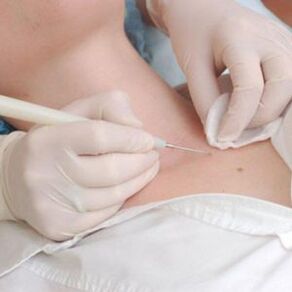
Treatment of HPV with manifestations on the male genitals is performed with medication and surgical means. In this case, drug therapy is designed to suppress the virus, introduce it into an anabiotic state, and help strengthen the immune system.
Even small papillomas on the male genitalia do not disappear on their own, so it is common to remove them surgically:
- by electrocoagulation by electric current;
- by freezing with liquid nitrogen - cryodestruction;
- using a laser;
- by radiosurgical method - a non-contact method based on exposure to radio waves of a certain frequency;
- by the method of cauterization with special chemical solutions;
- conventional surgical excision with a scalpel;
- using ointments that can remove accumulations.
The method of removing papillomas on the male genitals is chosen individually depending on the characteristics of the course of infection. All of the above destruction methods are recognized by physicians as reliable and can be performed without the use of general anesthesia.
What should I do if my papilloma is damaged
In case of damage to the surface of the papilloma, an inflammatory process may begin in the affected tissue. Externally, this will manifest itself in a change in the color of the formation, swelling, redness, burning and itching. An ichor mixed with pus or serous fluid with an unpleasant odor begins to seep from the wound. If the immune state is in a satisfactory state, the site of the tear soon dries out and no abnormalities are seen. But otherwise there is a risk of malignant tumors.
Severe trauma (burns, scratches, scuffs) can induce the spread of HPV to adjacent tissues and the growth of new lesions. Such a process has an even greater disposition for oncological degeneration.
If the papilloma is nevertheless damaged, it is necessary to quickly apply a sterile cotton swab or cotton wool swab previously soaked in a 3% solution of hydrogen peroxide and maintain this application for at least 10-15 minutes. After stopping the blood, the wound is treated with alcohol to disinfect the surface of the skin and prevent infection and fungus from entering the wound. In the absence of alcohol, disinfection is carried out using iodine or radiant green, although in the future these agents will interfere with the monitoring of the condition of the wound.
In case of significant bleeding due to damage to the papilloma, trauma is diagnosed for angioma - proliferation of benign blood vessels. Damage to angioma is not dangerous; as a result of such a pathology, oncology does not develop.
Where to go in case of illness
If you find different formations on the skin in the first stage, see a dermatologist. This physician performs the necessary diagnostics, determines the type of virus, and determines the patient's further actions.
Most often, dermatologists are of the opinion that the earlier the papilloma is removed, the lower the risk of developing dangerous consequences, but everything is individual. The dermatologist will tell the patient which specialist it will be necessary to perform the removal and which technique in this particular case is better preferred. The doctor will also determine the additional treatment regimen, after which it will be possible to go for a consultation with the surgeon.
If papillomas occur in the genital area, you should seek the advice of a dermatologist. If the formations are located in the anus, the proctologist will deal with the treatment of such a pathology. In case of papillomas on the mucous membranes of the ENT organs or the oral cavity, the patient is referred to an otolaryngologist. Genital papillomas in men are treated by a urologist or dermatovenerologist, and in women a gynecologist treats these problems.














































































